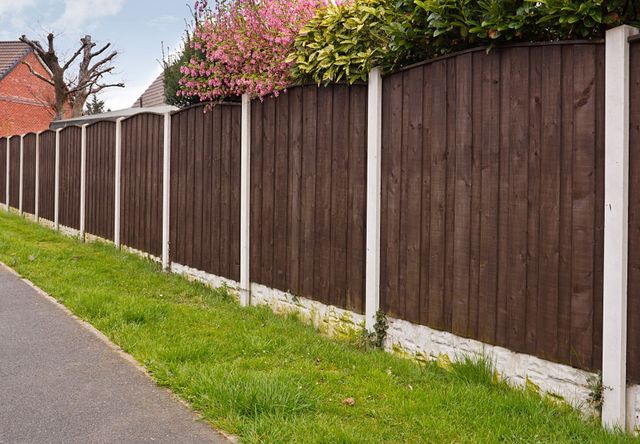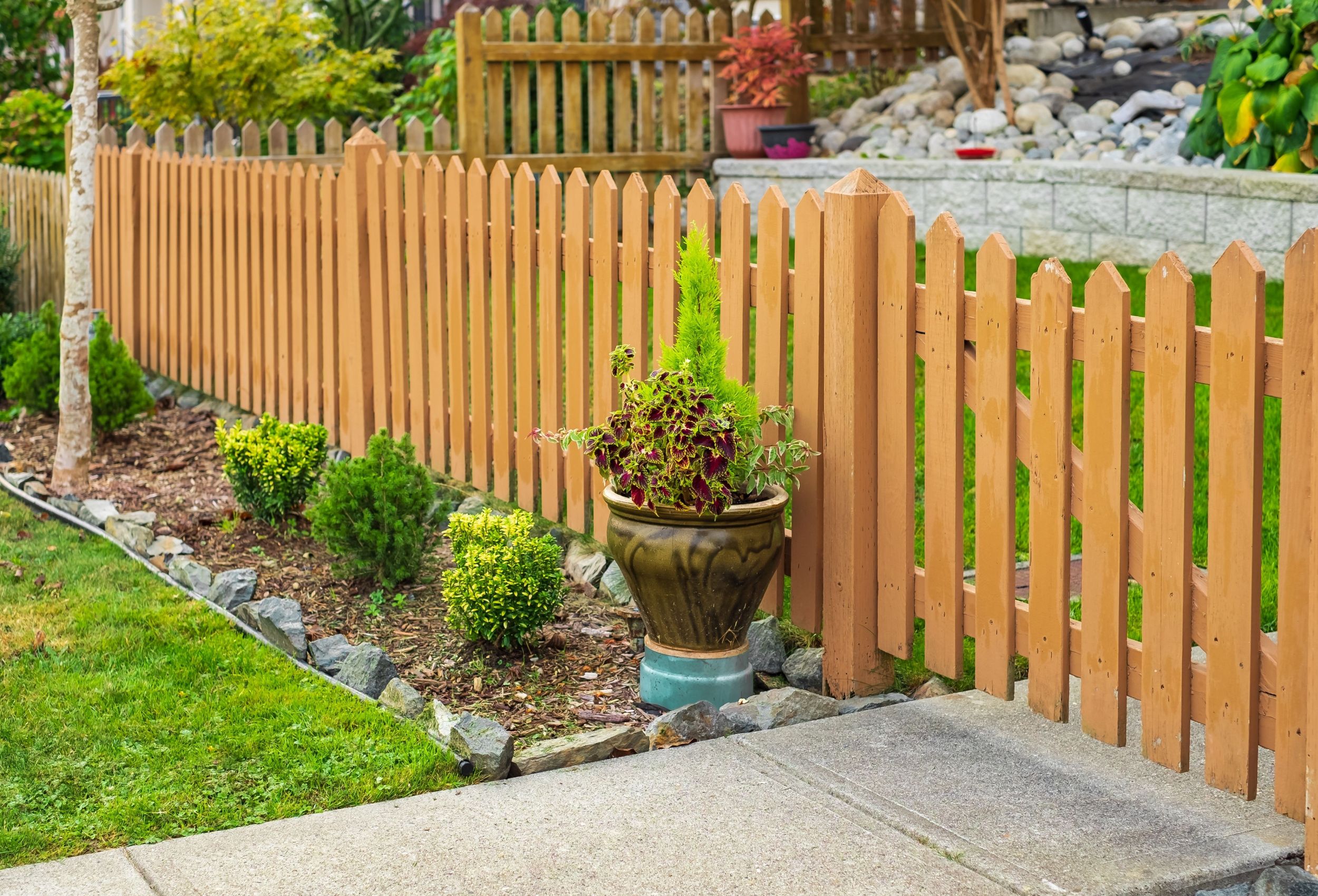All Categories
Featured
When it comes to maintaining a wood fencing, property owners commonly face the choice of whether to stain or paint. Both alternatives have their cons and pros, and the option ultimately depends upon your aesthetic preferences, the sort of wood, and just how much maintenance you're ready to dedicate to. Right here's a comprehensive contrast to help you make a notified choice.
The Essentials of Painting and Staining
Painting entails covering the timber with a nontransparent layer of shade. It gives complete protection, concealing the timber grain while using outstanding defense against environmental aspects.
Discoloring penetrates the timber, boosting its all-natural beauty while including a safety layer. Depending on the type, spots can range from clear to solid, allowing differing degrees of wood grain visibility.
Benefits And Drawbacks of Paint
Pros:
Variety of Colors: Repaint offers limitless shade choices, enabling you to match your fence to your home's exterior or individual style.
Longer Enduring: Top quality exterior paint can last approximately 5-7 years, requiring much less frequent reapplication.
Superior Security: Repaint kinds a thick, strong obstacle versus dampness, UV rays, and parasites.
Disadvantages:
Peeling Off and Cracking: With time, paint can peel or break, specifically in locations with severe weather conditions.
Hides Natural Timber Beauty: If you enjoy the natural grain of timber, paint might not be the very best choice.
Higher Upkeep: Repainting needs removing the old paint, which can be labor-intensive.
![]()
Pros and Cons of Discoloration
Pros:
All-natural Appearance: Stains preserve and enhance the all-natural charm of the timber, making it excellent for top quality lumber like cedar or redwood.
Simpler to Reapply: Unlike paint, spots don't split or peel off. Reapplying stain commonly needs much less surface area prep work.
Flexible End Up Choices: Discolorations can be found in transparent, semi-transparent, and solid selections, supplying different degrees of protection.
Disadvantages:
![]()
Much Shorter Lifespan: Spots, semi-transparent and especially transparent ones, might require reapplication every 2-3 years.
Limited Color Options: While discolorations offer natural tones, they do not have the wide color palette readily available with paint.
Less Protective: Spots penetrate the timber yet do not offer as thick a barrier as paint, making them slightly much less safety versus extreme climate.
Factors to Think About
Aesthetic Preferences: If you want vibrant colors and full coverage, paint is the means to go. For a all-natural and rustic appearance, choose stain.
Timber Kind: High-grade timbers with lovely grains gain from staining, while lower-grade timbers can be repainted for a polished look.
![]()
Climate: In moist or wet climates, paint's thicker barrier may provide better protection. In dry or moderate environments, discolorations can suffice.
Upkeep Dedication: Paint involves much less constant reapplication but more effort during touch-ups. Staining calls for normal maintenance however is less complicated to handle.
Final Ideas
Both painting and staining can effectively protect and enhance your wood fencing. The very best option relies on your concerns, whether they favor appearances, resilience, or ease of upkeep. By recognizing the benefits and disadvantages of each, you can pick the finish that lines up with your requirements and ensures your fence remains a standout attribute of your property for years to find.
The Essentials of Painting and Staining
Painting entails covering the timber with a nontransparent layer of shade. It gives complete protection, concealing the timber grain while using outstanding defense against environmental aspects.
Discoloring penetrates the timber, boosting its all-natural beauty while including a safety layer. Depending on the type, spots can range from clear to solid, allowing differing degrees of wood grain visibility.
Benefits And Drawbacks of Paint
Pros:
Variety of Colors: Repaint offers limitless shade choices, enabling you to match your fence to your home's exterior or individual style.
Longer Enduring: Top quality exterior paint can last approximately 5-7 years, requiring much less frequent reapplication.
Superior Security: Repaint kinds a thick, strong obstacle versus dampness, UV rays, and parasites.
Disadvantages:
Peeling Off and Cracking: With time, paint can peel or break, specifically in locations with severe weather conditions.
Hides Natural Timber Beauty: If you enjoy the natural grain of timber, paint might not be the very best choice.
Higher Upkeep: Repainting needs removing the old paint, which can be labor-intensive.

Pros and Cons of Discoloration
Pros:
All-natural Appearance: Stains preserve and enhance the all-natural charm of the timber, making it excellent for top quality lumber like cedar or redwood.
Simpler to Reapply: Unlike paint, spots don't split or peel off. Reapplying stain commonly needs much less surface area prep work.
Flexible End Up Choices: Discolorations can be found in transparent, semi-transparent, and solid selections, supplying different degrees of protection.
Disadvantages:

Much Shorter Lifespan: Spots, semi-transparent and especially transparent ones, might require reapplication every 2-3 years.
Limited Color Options: While discolorations offer natural tones, they do not have the wide color palette readily available with paint.
Less Protective: Spots penetrate the timber yet do not offer as thick a barrier as paint, making them slightly much less safety versus extreme climate.
Factors to Think About
Aesthetic Preferences: If you want vibrant colors and full coverage, paint is the means to go. For a all-natural and rustic appearance, choose stain.
Timber Kind: High-grade timbers with lovely grains gain from staining, while lower-grade timbers can be repainted for a polished look.

Climate: In moist or wet climates, paint's thicker barrier may provide better protection. In dry or moderate environments, discolorations can suffice.
Upkeep Dedication: Paint involves much less constant reapplication but more effort during touch-ups. Staining calls for normal maintenance however is less complicated to handle.
Final Ideas
Both painting and staining can effectively protect and enhance your wood fencing. The very best option relies on your concerns, whether they favor appearances, resilience, or ease of upkeep. By recognizing the benefits and disadvantages of each, you can pick the finish that lines up with your requirements and ensures your fence remains a standout attribute of your property for years to find.
Latest Posts
Why Consistent Car Maintenance at Montclare Auto Repair Saves You Money
Published en
1 min read
Smooth Light Weight Aluminum Gutters: The Smart Option for Your Home
Published en
1 min read
Explore Top Car Repair Solutions at Montclare Auto Repair – Drive with Confidence
Published en
1 min read
More
Latest Posts
Why Consistent Car Maintenance at Montclare Auto Repair Saves You Money
Published Jun 01, 25
1 min read
Smooth Light Weight Aluminum Gutters: The Smart Option for Your Home
Published May 27, 25
1 min read
Explore Top Car Repair Solutions at Montclare Auto Repair – Drive with Confidence
Published May 27, 25
1 min read